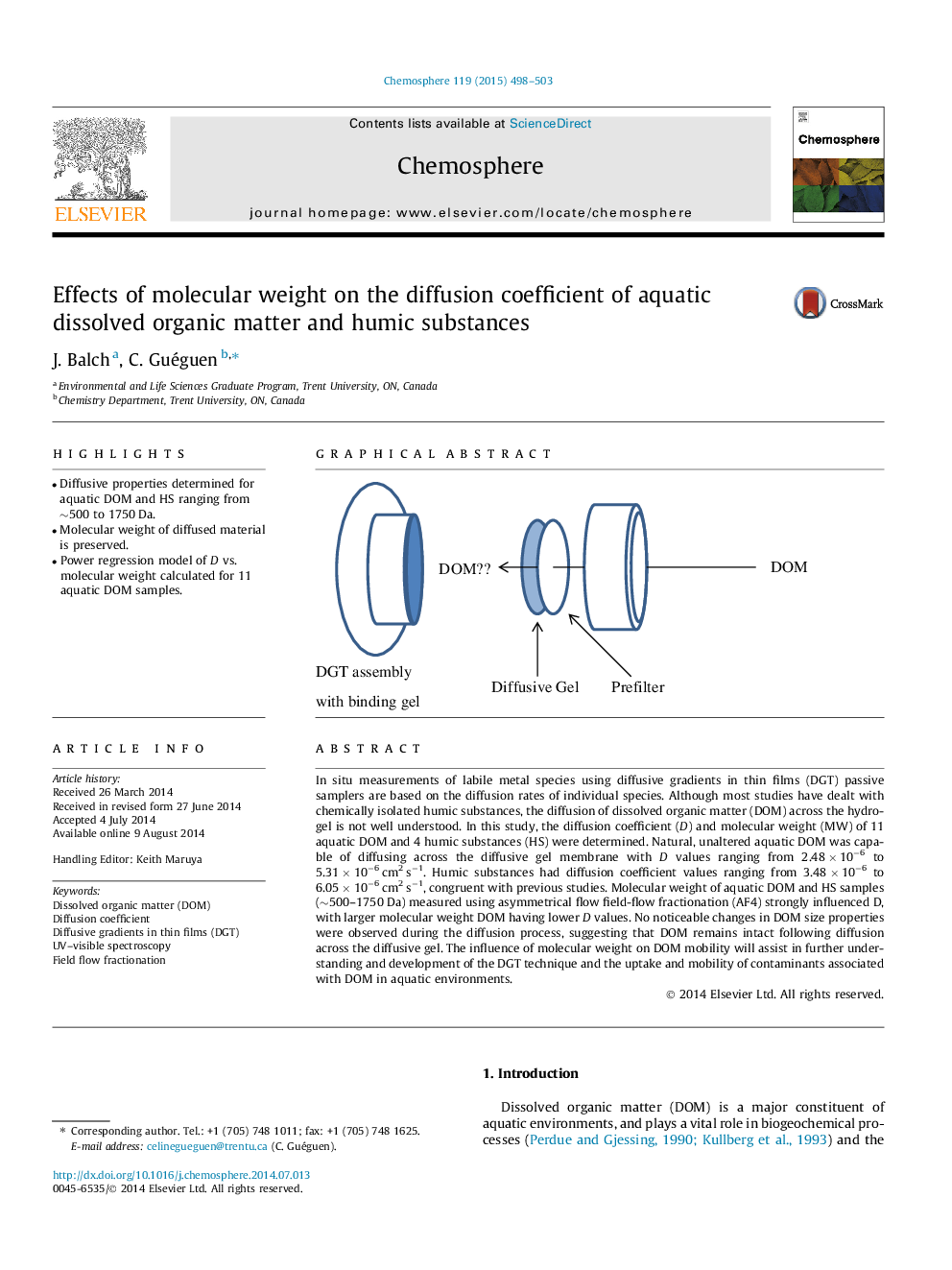| Article ID | Journal | Published Year | Pages | File Type |
|---|---|---|---|---|
| 4408661 | Chemosphere | 2015 | 6 Pages |
•Diffusive properties determined for aquatic DOM and HS ranging from ∼500 to 1750 Da.•Molecular weight of diffused material is preserved.•Power regression model of D vs. molecular weight calculated for 11 aquatic DOM samples.
In situ measurements of labile metal species using diffusive gradients in thin films (DGT) passive samplers are based on the diffusion rates of individual species. Although most studies have dealt with chemically isolated humic substances, the diffusion of dissolved organic matter (DOM) across the hydrogel is not well understood. In this study, the diffusion coefficient (D) and molecular weight (MW) of 11 aquatic DOM and 4 humic substances (HS) were determined. Natural, unaltered aquatic DOM was capable of diffusing across the diffusive gel membrane with D values ranging from 2.48 × 10−6 to 5.31 × 10−6 cm2 s−1. Humic substances had diffusion coefficient values ranging from 3.48 × 10−6 to 6.05 × 10−6 cm2 s−1, congruent with previous studies. Molecular weight of aquatic DOM and HS samples (∼500–1750 Da) measured using asymmetrical flow field-flow fractionation (AF4) strongly influenced D, with larger molecular weight DOM having lower D values. No noticeable changes in DOM size properties were observed during the diffusion process, suggesting that DOM remains intact following diffusion across the diffusive gel. The influence of molecular weight on DOM mobility will assist in further understanding and development of the DGT technique and the uptake and mobility of contaminants associated with DOM in aquatic environments.
Graphical abstractFigure optionsDownload full-size imageDownload as PowerPoint slide
